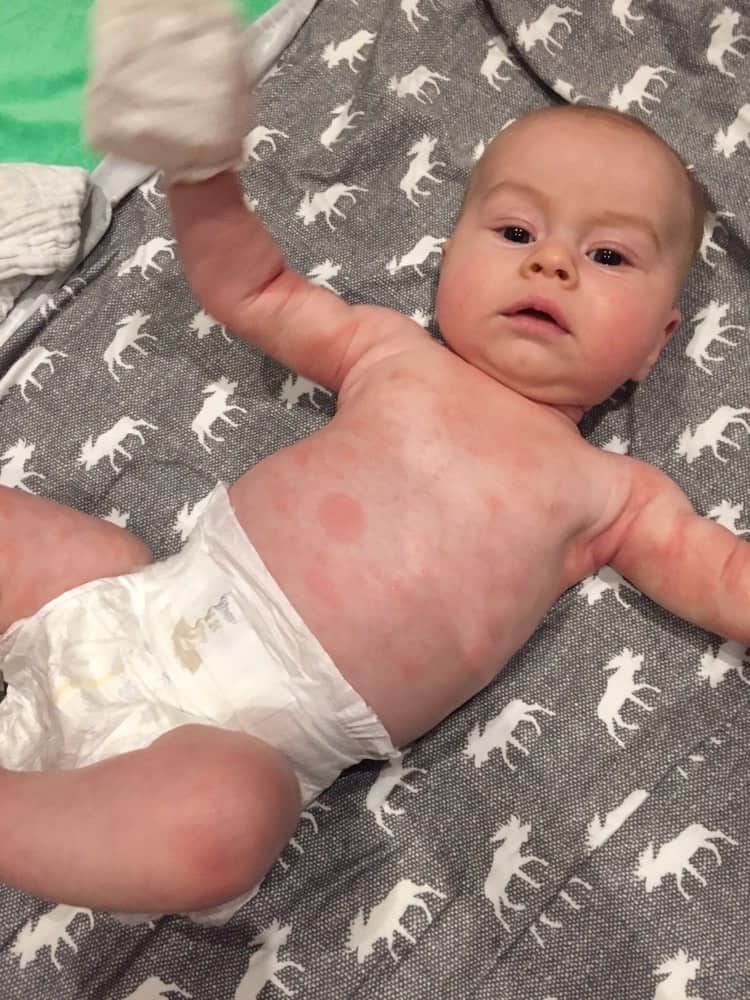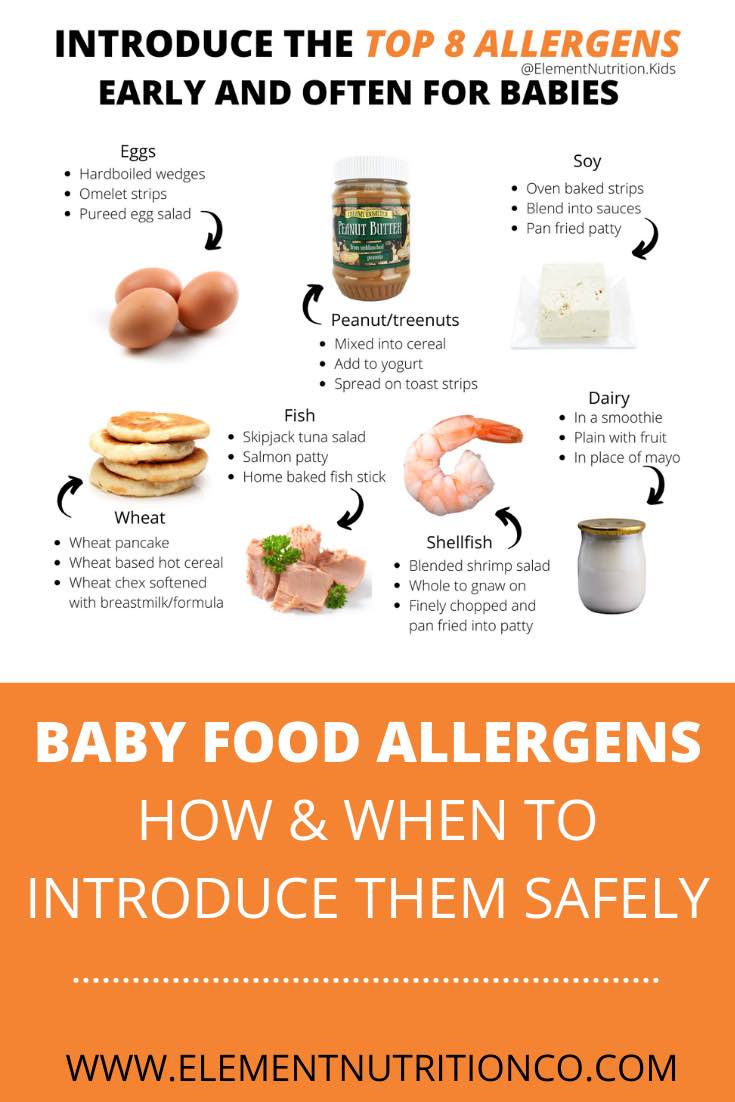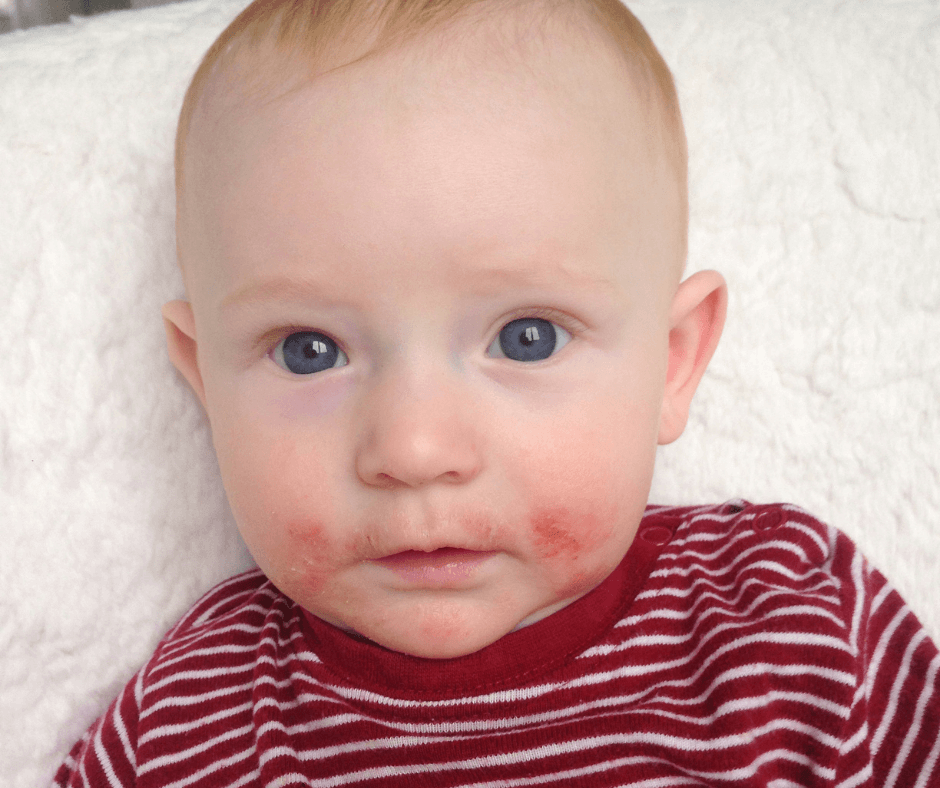Baby food allergies are a common concern for new parents. They can be confusing and scary.
Understanding baby food allergies is essential for every parent. Babies can have different reactions to foods. Some reactions are mild, while others can be serious. Knowing what to look for helps you keep your baby safe. Allergies can develop from common foods like milk, eggs, or peanuts.
Early detection is key in managing them effectively. This guide will help you navigate the world of baby food allergies. Learn about symptoms, common allergens, and how to introduce new foods safely. Let's ensure your baby enjoys a happy and healthy start to eating solids.

Credit: solidstarts.com
Common Food Allergies In Babies
Babies can be allergic to many foods. Milk is a common allergen. Eggs can also cause allergies. Peanuts are another frequent cause. Tree nuts like almonds and walnuts can be problematic. Soy is an allergen for some babies. Wheat and fish can also trigger allergies. Shellfish like shrimp and crab are common allergens too. Watch for reactions to these foods.
Allergic reactions can show in many ways. Hives are red, itchy bumps. Swelling of the face, lips, or tongue is a sign. Trouble breathing is serious. Babies may also have vomiting or diarrhea. Look for a rash on the skin. Babies might be fussy or cry a lot. Coughing or sneezing can occur. Runny nose is another sign. If these symptoms appear, contact a doctor.

Credit: www.elementnutritionco.com
Identifying Allergic Reactions
Babies can develop food allergies, causing symptoms like rashes, hives, or stomach issues. Notice any unusual reactions after introducing new foods. Seek medical advice if symptoms persist or worsen.
Signs Of Mild Reactions
Babies might show a red rash on their skin. They could also get itchy skin. Sometimes, they have a runny nose. Their eyes may become watery. Another sign is sneezing a lot. Babies might also have a tummy ache. These signs usually go away on their own. It's important to watch your baby closely.
Severe Allergic Responses
Some reactions are more serious. Babies might struggle to breathe. Their lips or face could swell up. They might vomit a lot. Sometimes, they get very pale or blue. They could pass out or feel very weak. These signs need quick help. Call a doctor or go to the hospital right away. Stay calm and act fast.
Introducing Solid Foods Safely
Start with single-grain cereals. Rice cereal is a good first choice. Gradually add pureed fruits and vegetables. Avoid foods that can cause choking. Wait until your baby is six months old before introducing solid foods.
Introduce new foods one at a time. Wait a few days between new foods. Watch for allergic reactions. Common signs include rash, diarrhea, and vomiting. If you notice these signs, stop the new food.
Reading Food Labels
Many foods have hidden allergens. These can be hard to see. Always read food labels carefully. Words like "casein" mean milk. "Albumin" means egg. Some terms are tricky. "Whey" is also milk. Hidden allergens can be in sauces. They can be in snacks too. Watch for "lecithin." It means soy. Gluten can hide in foods. Look for "malt" or "barley." These mean gluten. "Natural flavors" can mean anything. Be extra careful.
Food labels use many terms. Some are common. "Contains" is clear. It means the food has that allergen. "May contain" is tricky. It means the food could have it. "Processed in a facility with" is also used. It means the allergen is in the same place. Always check labels twice. It keeps your baby safe.
Managing Allergies At Home
Always wash hands before making baby food. Clean surfaces and tools. Use separate cutting boards for different foods. Avoid using the same knife for allergenic foods and safe foods. This stops cross-contamination.
Store allergenic foods in sealed containers. Label them clearly. Keep them away from baby’s food. Use separate utensils for serving. Wash dishes and utensils thoroughly. This prevents allergenic foods from mixing with safe foods.
Emergency Action Plan
Parents must have a plan for baby food allergies. Start by listing all known allergens. This list helps caregivers avoid risky foods. Always carry a copy of the plan. Make sure everyone knows the steps to take in an emergency. Practice these steps often. It keeps everyone prepared.
Keep essential medications nearby. This includes antihistamines and an epinephrine injector. These can save a baby's life. Check expiration dates regularly. Replace any out-of-date medicine. Show caregivers how to use them. Their knowledge is crucial during an allergic reaction.
Consulting Healthcare Providers
Babies can show allergic reactions. Redness, swelling, or trouble breathing. Seek help if these happen. Some signs are mild. But some are serious. Don't wait if the baby has trouble breathing. Call a doctor fast. Early help prevents worse problems. Always keep emergency numbers handy.
Doctors test for food allergies. Skin tests or blood tests are common. These tests help find the allergen. Knowing the allergen helps keep the baby safe. Avoiding the allergen is key. Follow the doctor's advice. Read labels on baby food. Be careful with new foods. Always consult the doctor first.
Supporting Your Child
Teach caregivers about your child's food allergies. Explain which foods to avoid. Show them how to read food labels. Make sure they know the signs of an allergic reaction. Give them a list of safe foods. Practice using an epinephrine injector. Share emergency contact information. Keep communication open and clear.
Children with food allergies need emotional support. They may feel different from other kids. Reassure them that it's okay. Encourage them to speak up about their allergies. Help them feel safe and included. Plan playdates with safe snacks. Celebrate their bravery.

Credit: www.motherhoodcenter.com
Frequently Asked Questions
What Are Common Baby Food Allergies?
Common baby food allergies include milk, eggs, peanuts, tree nuts, soy, wheat, fish, and shellfish. These allergens can cause reactions ranging from mild to severe. Always introduce new foods one at a time.
How To Identify Baby Food Allergies?
Identify baby food allergies by watching for symptoms like hives, swelling, vomiting, diarrhea, or difficulty breathing. Symptoms typically appear within minutes to hours. Consult a pediatrician if you suspect an allergy.
When Do Baby Food Allergies Start?
Baby food allergies can start as soon as solid foods are introduced, usually around 6 months. Early exposure to allergens can help identify potential allergies.
How To Prevent Baby Food Allergies?
Prevent baby food allergies by introducing allergenic foods early and gradually. Offer small amounts and monitor for reactions. Breastfeeding may also help reduce the risk of allergies.
Conclusion
Understanding baby food allergies can feel overwhelming. Yet, knowledge helps parents stay prepared. Always observe your baby’s reactions to new foods. Introduce one new food at a time. Seek medical advice if allergies appear. Prevention is better than cure. Stay informed, and keep your baby safe.
Your child's health matters most. Educate yourself, and ensure a happy, healthy baby.
.png)

.jpeg)



0 Comments